
To borrow a phrase from the millennials which emphasizes a particular situation is difficult, the struggle for Siargao to be environmentally sustainable is challengingly real. No doubt, the triumph in tourism is a double-edged sword. On one hand, it brings a positive image and branding that leads to economic development to a destination and its peripheries; but on another, it leads to over development that leads to overpopulation, pollution, destruction of the ecosystem and society itself.
With the moral that the entire industry learned from the lessons in the closure of Boracay last year, it is hard to fathom that we still continue to practice that very reasons why it bore the brunt of President Rodrigo R. Duterte’s anger.
When Boracay was off-limits to tourists for 6 months, Siargao, which landscape and seascape were classified by the Department of Environment and Natural Resources as a protected area, became the instant darling of Philippine tourism. More domestic flights were opened, construction of more hotels, restaurants, resorts and leisure establishments surged, and more tourists arrived. This gave the community an overwhelming sense of excitement and dread at the same time. It stood – and still stands – at the floodgates of a continuing massive tourism boom.
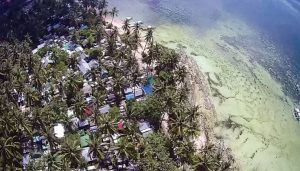
Unlike Boracay, Siargao doesn’t just rely on the beach to lure tourists. It has pristine islands, tidal pools, rivers, caves, coral reefs, waterfalls, coves, lakes, farms, rice fields, mountains, mangrove forests, jellyfish pool, exotic wildlife (aside from crocodiles, the ASEAN Centre for Biodiversity recently reported the discovery of 3 new cricket species in the island), among many others. It also meant more natural attractions and fragile ecosystem opened to the public with some sites with no apparent safety measures to protect them.
What used to be a large expanse of land is now turning into villages of boutique hotels, homestay accommodations, restaurant rows, and ocean-facing resorts.
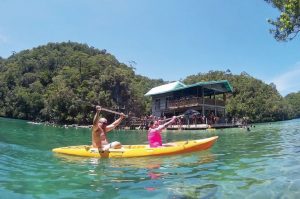
Last year, Siargao local and surfer Rafael Nogalo posted a photo of an open dumpsite on his Instagram, lamenting the failure of the island’s waste management problem, holding he current tourism as he culprit. He said, ”while tourists sip cocktails on Siargao’s picture-perfect beaches, mountains of rubbish are piled in our back roads – poisoning the groundwater and creating irreversible damage to our beloved island home. The real beauty behind Siargao island… More tourist, more business, more trash.” Real talk and the sad truth.
This resulted for the DENR to issue notices of violation to almost a hundred Siargao tourism establishments and to investigate their sewages and dumpsite. The Department of Tourism even pressured DENR to work double-time but guaranteed to assist the agency as well in resolving the island’s waste management situation.
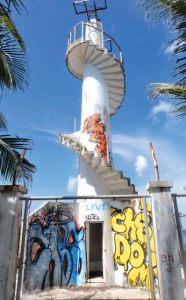
“Ironically, DENR also closed down our dumpsite for violating environmental and waste management policies,” shared local tour operator Philip Cruz, who also runs a beachside inn.
The said dumpsite in Sitio Sta Rosa was located in a protected area.
“Netizens were posting videos and photos of untreated mountains on social media. This caught the attention of our officials. It would have been better if they addressed the situation before everyone shared it online for the world to see,” he added. The dumpsite violated the Ecological Solid Waste Management Act, which prohibits open dumping of waste. Waste is supposedly disposed of in a materials recovery facility or sanitary landfill.
The government’s inability to address the problems in haste has prompted locals, the surfing community, private stakeholders and even visitors to pitch in their ideas in helping protect Siargao.
“With Nature Kids of Siargao, we found a platform to engage the children of Siargao and their families to volunteer in creating a good, sustainable life while nurturing our planet,” said founder Sanne “Sunny” Sevig, a Swedish national.
To date, NKoS have involved almost 2,000 with their Recycling Arts Studio in General Luna, a project that gathers trash donations and turns them into sustainable products.
“This doesn’t only provide a waste management solution and prevent this trash from ending up in landfill or the ocean, it also gives education, employment, and skill-building opportunities to the locals. By working with the youth, we can bring real, long-term change to protect our beautiful island.,” she added.
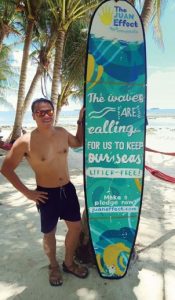
NKoS also runs Zero Waste Schools, a program that promotes an in-classroom recycling program, and Pay By Plastic, which aims to give locals the opportunity to exchange trash for essential products (essentially, exchanging trash with essential daily provisions, such as household items, school supplies, and food.
Another organization, Siargao Environmental Awareness (SEA) Movement, is also making itself accountable in saving Siargao.
“It is an organization, composed of surfers, artists, writers, entrepreneurs, journalists and policy-makers, that focuses on marine conservation,” Cruz added.
Unfortunately, we weren’t able to speak to any of its officers but we learned from Cruz, who’s also active in the community, that SEA is a community endeavor that seeks to preserve Siargao by raising awareness and acts as a conduit to network “passionate people with unique skills and willing to help in creating sustainable solutions.”
Meanwhile, Cebu Pacific Air’s “Juan Effect” program aims to mitigate the impact of tourist arrivals on the environment by engaging travelers and stakeholders in raising awareness about their responsibilities as tourists and encourages them to make a difference by changing one daily habit that affects the environment.
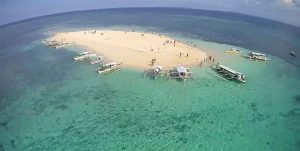
For starters, the airline made use of old surfboards for educational and instructional materials set up in some of General Luna’s high traffic sites, such as Cloud 9. It also advocates for the use of reusable dining utensils and straws. DOT Secretary Bernadette Romulo-Puyat, whose agency is collaborating with the airline in the project, said that that Juan Effect pilot modules will become the “models and yardsticks for sustainable tourism practices and action plans” of her agency.
Siargao has also banned single-use plastic bags, thus, if you’re in town, don’t expect your groceries to be packed in plastic bags. Instead, shoppers are encouraged to use paper bags, reusable bags or bags made from degradable resin compounds. There are no reported facilities for recycling the aforementioned materials. The ban also does not include items wrapped in plastic, such as food, plastic mineral water containers, selling of shampoo, soap, and lotion in plastic sachets and receptacles, among others.
Since smoking is not heavily regulated in the island, cigarette butts can still be found in many areas in Cloud 9 as well as in areas with high tourist traffic.
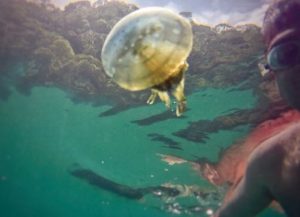
The journey to save Siargao is far from over. Some locals blame tourism, some tourists blame the failure of government. With everyone buckling down and doing their bit, we can’t waste any more time in pointing the blame on anyone. If everyone, including government, investors, and tourists, can giving environmental conservation a premium, then Siargao will have a fighting chance of remaining livable and sustainable.
